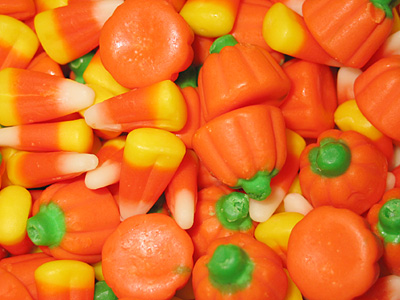Every Halloween, environmentalists and postconsumers alike talk about the consumerism of Halloween parties and costumes. In fact, we’ve even gone as far as to give tips on how to have not only a postconsumer-friendly Halloween but how to select postconsumer-friendly Halloween costumes. But for some reason many of us skip over one of the most obvious areas of consumption and consumerism that happens during our favorite holiday – the consumerism of Halloween candy. We’re not saying that Halloween candy (or other edibles) is a bad tradition. But we do think we should all take a pause to think about the consumer machine behind your Halloween candy purchases.
Trick or Treat is Sweet.
To be clear, we are in no way suggesting that you forego participating in your neighborhood’s trick or treat festivities just so you don’t have to participate in buying Halloween candy. Trick-or-treat is one of the few remaining offline activities that bring most communities together. Additionally, chances are that Halloween trick-or-treat is one of your most vivid and favorite memories from your own youth. And as sad as this is to say, we’re also not suggesting that you bypass the candy purchases and make your own Halloween treats. As unfortunate as it is, parents concerns about the contents and intent of homemade Halloween treats from strangers is based on real-life and valid occurrences. We wish it were not the case, but it is. So if you want to participate in trick-or-treat, which is a great thing to do, you’ll have to buy some candy or other goodies. But how much candy do you really need?
The Marketers Would Have You Believe That You Need ALL the Candy
Walk down the Halloween aisle in any grocery store and you’ll only get one message: consume as much candy as possible. We know what you’re saying. You’re saying “That candy is in huge bags at massive discounts because you need enough candy to feed your entire neighborhood.” Yes, that’s true. You do need enough candy for your local trick or treaters. But ask yourself this – is the marketing message one of “Be great to your local kids!” or is it one of “More is better. More is always better?” The answer is obviously the latter, and the reason that that’s the marketing message is because marketers know what you will respond to. Chances are that you will not be enthused about buying forty pounds of candy just to be the best house on the street during trick or treat. But if marketers tap into your societally programmed belief that “more is always, always, better” then they can easily turn a purchase of one bag of candy into a purchase of three bags of candy. Your marketing trigger is easy – more is better.
But You’re Saving Money, Right?
The other thing that marketers would have you believe is that you’re saving money by purchasing your candy in huge bulk bags, and a deal is always great, right? Wrong. In truth, you likely are saving some money over what you would spend if you bought the same amount of candy in smaller-sized bags. But ask yourself this – would you ever buy that much candy if it weren’t priced so enticingly? The answer is obviously no. And is a deal really a deal if it’s causing you to spend money that you wouldn’t normally spend on items that you normally wouldn’t buy? It’s not. And it’s even less so if those items are actively unhealthy for you. You do need to buy some more candy than you normally would because you’ll be giving it out. You do not need to buy ALL of the candy! We’ve talked about why bulk buying isn’t always the best option previously. That’s just as true when you’re talking about Halloween candy. Just because you can buy more, it doesn’t mean that you should buy more.
Oh, But It’s Right There…
And don’t fool yourself. Halloween candy is one of the biggest places where marketers use store placement to lure you into an impulse buy. Those chocolate bags right at the start of the checkout line aren’t there by accident. They’re a very deliberate choice to convince you to spend more money on more candy at a moment when your guard may be down. Our advice? Look away! Look away from the tempting candy bags from October first through the end of the month.
Finding Your Candy Comfort Level
We don’t want to take the fun out of Halloween for you, and candy is certainly part of the fun. But like with most items you’ll purchase for the holidays, there’s probably a big gap between what you need to buy, what you want to buy and what smart marketers will convince you to buy. Your job in all of this is to find your own comfort zone in between need and want without any noise from the marketing machine. And if you can do that, you will indeed have experienced a Halloween treat!
Did we miss a postconsumer Halloween candy tip that you want to share with us? If so, just tell us about it on one of the social media channels below.
Facebook | Twitter | Instagram | Tumblr | Pinterest | Google+
Photo Credit: Juushika Redgrave via Flickr





